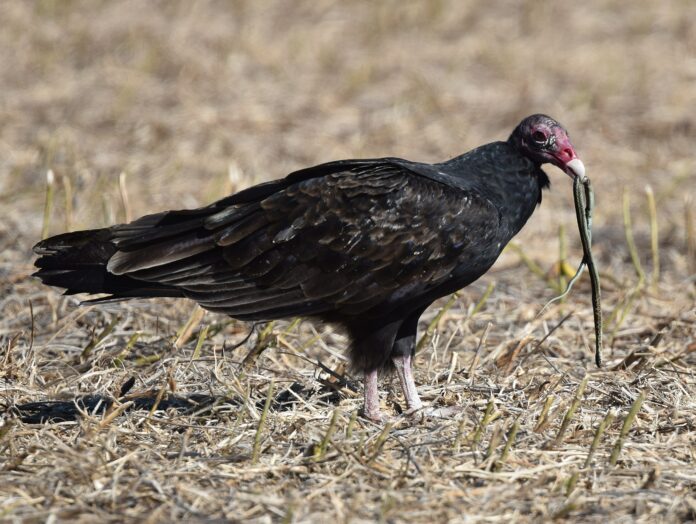
By Hannes Thum
The turkey vultures are back in town. I recently saw a handful of them soaring over my neighborhood in Hailey, their wings locked in that characteristic V-shape and the silvery feathers on the trailing edge of their wings glinting in the sun against an otherwise jet-black silhouette. They’re unmistakable.
For me, their annual arrival to spend the warmer months with us has become an important touchstone of springtime—it means that summer is right around the corner.
But, where they go in the winter, I still don’t really understand. It strikes me that I simply have no idea how they travel to their winter home and back to my neighborhood each year (this is assuming, perhaps very incorrectly, that the same birds are returning to our valley summer after summer).
I have been reading and thinking about animal migrations and movements a lot lately, and if there is one single theme that has emerged, it is this: we know very little about how animals do it, and what we do know is pretty mind-boggling.
Moving across space is something that we take for granted. We have many tools at our disposal to find our way, whether we are talking about a short walk from our backyard or a cross-country road trip: maps that translate the world into two-dimensional models; compasses that orient us to which way we are facing (orientation being a necessity to start to head out on a bearing); and, landmarks and pathways on the landscape that we can use to calibrate our progress along the way. Etcetera.
You can’t get from Point A to Point B unless you know the relationship in space between Point A and Point B. Unless, that is, you have some sort of a map, mental or physical, that shows where Point A is vis-à-vis Point B, and some way of orienting yourself to that model as you travel. This process, often glossed over by GPS directions (for better or worse), is what we tend to take for granted.
How do animals do it? How do they calibrate their movements?
Do they form and retain mental maps? Because, if they do, we may need to rethink how we qualify and quantify intelligence in the animal kingdom. The more I think about it, the more confused and fascinated (confounded?) I get.
Animals all around us routinely demonstrate feats of navigation that I honestly have to wonder if an average human off the street could even begin to achieve—and without the obvious use of the tools mentioned above.
So, I am spending this week trying to picture how it is I move through space each day and how it is I calibrate those movements—and, more to the point, how I would do it without our human tools. And I’ll be keeping in mind that there may be ways of understanding the world that we are simply not privy to, but that there is evidence of all around, especially at the turning of the seasons.
Hannes Thum is a Wood River Valley native and has spent most of his life exploring what our local ecosystems have to offer. He currently teaches science at Community School.


